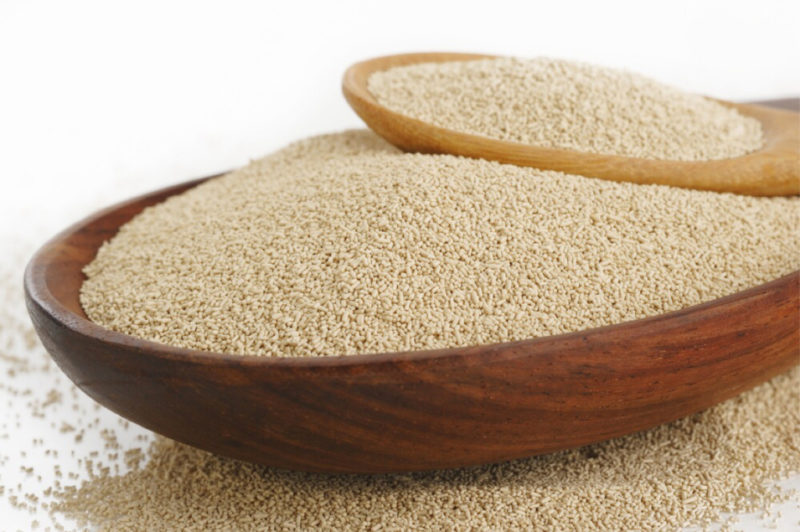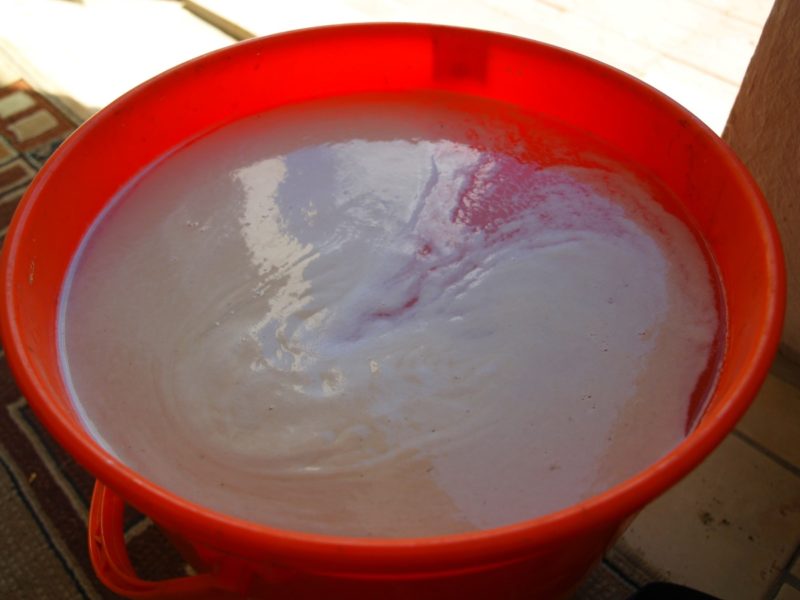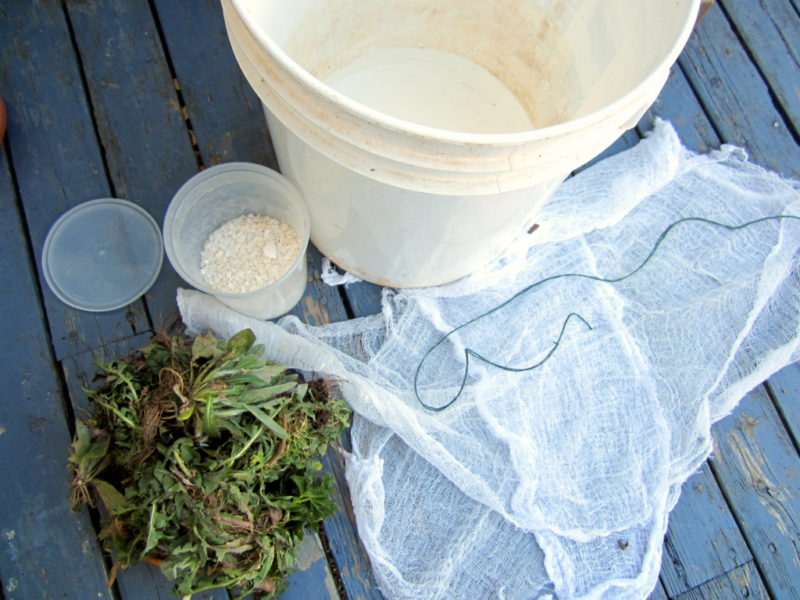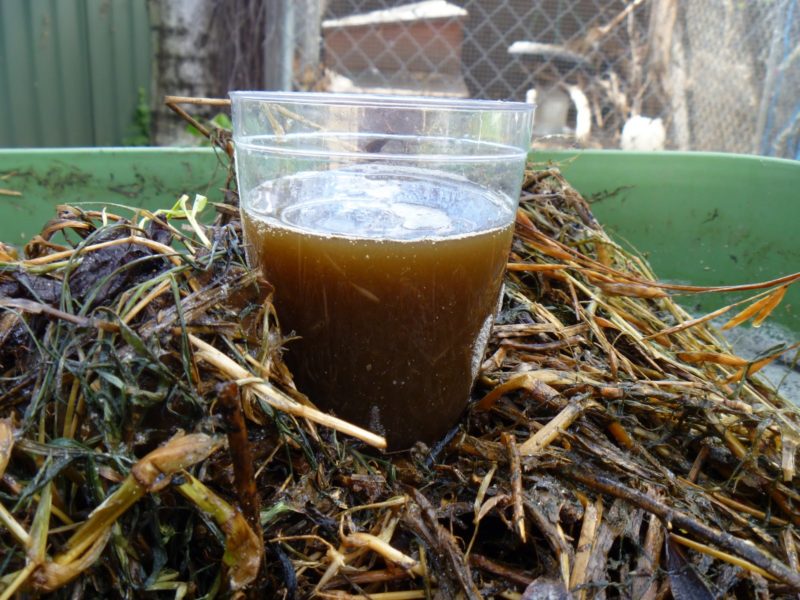Yeast fertilizer for the garden has long earned the recognition of experienced gardeners. It allows you to achieve impressive results without the use of aggressive chemistry.
Material Content:
Useful properties of yeast for the garden
Yeast is a well-known component used in the production of bakery products. But few people know that they can be used as fertilizer for the garden.

They contain a lot of proteins, minerals and trace elements. Over 10% of their mass is made up of essential amino acids. Such a rich composition allows you to use them as a top dressing for any garden crops.
The benefits of yeast for plants are as follows:
- They are a source of beneficial microorganisms.
- Activate root formation processes. As a result of numerous experiments, it was proved that the substances secreted by yeast cells accelerate the formation and development of roots by at least 10 days.
- Increase stability and endurance. Yeast-fed crops tolerate adverse weather conditions better.
- Seedlings during the cultivation of which used a yeast solution much better tolerates picking.
Yeast as a fertilizer can be used to feed any garden crops. They will be equally useful at all stages of plant development.
How to make fertilizer from yeast for plants?
There are a lot of options for feeding from yeast. Below are the most popular ones.

The recipe for universal nutrition
We will need:
- 1 kg of chilled yeast;
- 5 liters of warm water.
The cooking process itself is simple. Yeast is bred in water and left to infuse for 2-3 hours. For a more efficient fermentation process, 2-3 tablespoons of sugar can be added to the water. It will create a favorable breeding ground for the development of yeast fungi. Before use, the resulting solution is diluted in a proportion of 1:10. Watering they should be carried out strictly under the root.
It is interesting: how to make yeast - as a fertilizer for plants
In the absence of pressed yeast, they can be replaced with dry yeast. At the same time, their consumption leaves about 10 grams per 10 liters of water. After cooking, the mixture is infused for several hours. Before use, it is diluted at a rate of 1: 5.
Live Yeast Fertilizer
From live chilled yeast, you can make an excellent fertilizer for vegetables. This will require a 200 liter barrel. 5 buckets of pre-chopped nettles and a bucket of fresh mullein are laid out in it. After that, the barrel is poured to the top with water.
At the same time, a yeast solution is prepared in a separate container from 2 kg of chilled yeast and 5 liters of warm water.

In this case, proceed as follows:
- Break the yeast briquette into small pieces.
- Pour them with a small amount of warm water and leave until completely dissolved.
- Add 3 tablespoons of sugar to the resulting solution. It will serve as nutrition for yeast.
- Put for 2-3 hours in a warm place for fermentation.
After preparation, the yeast solution is poured into the barrel. In two weeks it will be completely ready for use.
Advice! A fermentation barrel is best placed in the shade. Excessive heat can kill the yeast.
The resulting fertilizer is used for watering under the root at the rate of 1 liter of mixture for each plant.
Dry yeast dressing
From dry yeast and chicken droppings, you can prepare universal dressing for all garden crops. For this, the litter must first be fermented.

They act as follows:
- Bird droppings, optionally chicken, are poured into the bucket to half the volume.
- A bucket is poured to the top with water.
- The resulting mixture is infused for 10 days.
After the fermented solution of bird droppings is ready, you can start making yeast yeast.
To do this, prepare the following:
- 1 sachet of active yeast weighing 10 grams;
- a bucket of warm water;
- sugar 2 tablespoons.
All of the above components are simply mixed together. The resulting mixture is left for 3 hours in a warm place for fermentation. After its readiness, you can begin to make fertilizer. To do this, half a liter of fermented bird droppings is poured into a bucket with yeast sourdough, 500 gram jar of wood ash is poured into the same bucket. After thorough mixing, the fertilizer is ready. Use it only for root irrigation.
Yeast as a fertilizer for cucumbers, tomatoes and eggplant
You can prepare fertilizer from yeast for tomatoes and other vegetables in the following way:
- 1 kg of baking yeast is dissolved in a bucket of water.
- The resulting mixture is left for fermentation for several hours.
- After the fermentation process is completed, ascorbic acid is introduced into the mixture at the rate of 2 grams per bucket of water.
- After 24 hours of infusion, the fertilizer is ready for use.
Advice! Experienced gardeners, along with ascorbic acid, add a handful of earth to the yeast solution. This allows you to activate existing soil microorganisms.
Before use, the mixture is diluted in a proportion of 1:10. It is used for watering under the root.
Bread and yeast recipe
Yeast for cucumbers and other crops can be used as yeast bread and yeast.

To cook it you will need:
- crusts or old brown bread, but not necessarily moldy;
- 10 g of instant yeast;
- 1 cup yogurt;
- 100 g of wood ash.
Bread or crusts break into small pieces and fold into a bucket. Then the rest of the ingredients are added to them, and everything is poured to the top with warm water. After thorough mixing, wrap the container and leave for a week for fermentation. At the same time, once every 2 days, the mass must be mixed. Before use, the mixture is diluted with water in a ratio of 1: 1. Use it only for root top dressing seedlings and fruit-bearing crops.
Restrictions on the use of yeast top dressing
Yeast is an excellent fertilizer for most garden crops. But you cannot use them uncontrollably. Their excess will have a negative impact on the growth and development of plants. When making them, the following rule should be observed.
In the process of fermentation, the yeast absorb a lot of calcium and potassium, so when they are introduced, wood ash is used. It effectively eliminates the disadvantage of this trace element. Also, various fertilizers of the potash group can act as an analogue of ash.

Some crops are not recommended. These are mainly root crops. So, for example, you can’t use yeast dressings on plantings of onions and garlic. After their use, vegetables can not be used for winter storage. Yeast solutions are also not recommended for planting potatoes. From them, his tubers become soft and loose.
Yeast will be useful only to those plants whose yield depends on the degree of root development. These include peppers, tomatoes, cucumbers. From root crops, carrots and radishes respond positively to yeast.
Also, when using yeast, you should know that they begin to feed them only after planting seedlings in open ground. It is impossible to bring yeast solutions into planting boxes and flowerpots. Excess yeast microorganisms in conditions of limited volume will lead to soil acidification. As a result, plants will begin to lack essential nutrients and stop growing.
Uncontrolled introduction of yeast can for many years deplete the soil with calcium and potassium. It will have to be fixed for several years. Therefore, when using them, the basic rules and norms of application should be strictly observed.












